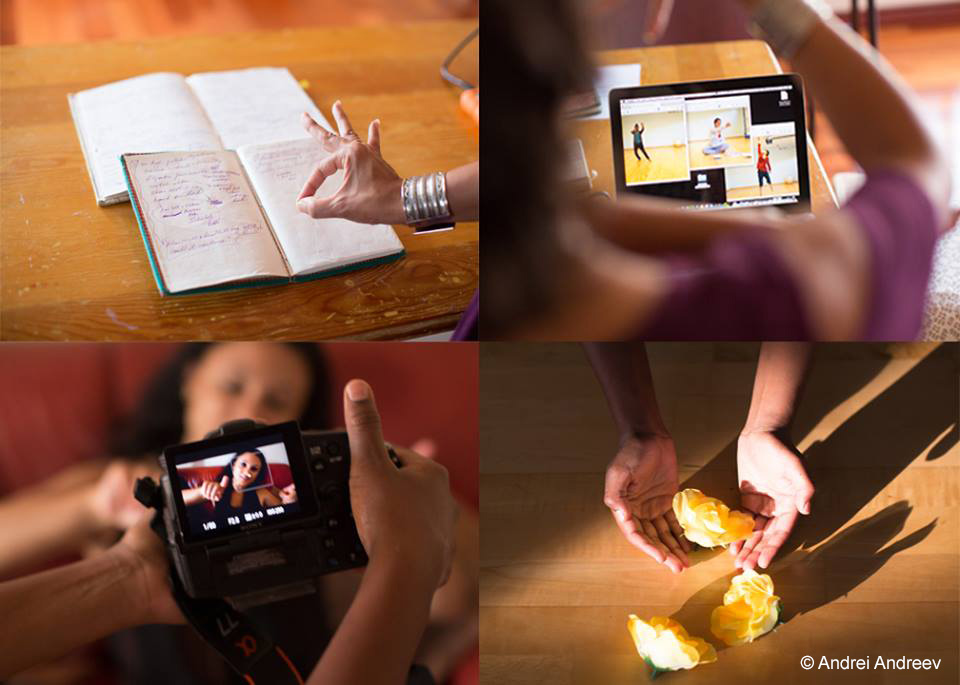Irit Rogoff is looking for a new notion of “we”—one that stands for shared production of meanings in the context of temporary relationships established around an artistic work. She seeks to shift notions of perception and participation away from analytical parameters, towards paying attention to their performative functions (Rogoff 2002: 54). (*15) She re-defines central words such as “collectivities,” “mutualities,” “participation,” and “criticality” and argues that performative collectivities are created by the mere fact of assembling in a room around an artwork, exhibition, artistic enterprise, etc. She wants to go beyond the “we’s” usually associated with art contexts: “museum- and exhibition visitors,” “art lovers,” “privileged citizens of the artworld,” and critical art theorists. She also includes “we who believe that contemporary art has a part in the formation of citizenship” (Rogoff 2002: 54, my translations).
(*15) She re-defines central words such as “collectivities,” “mutualities,” “participation,” and “criticality” and argues that performative collectivities are created by the mere fact of assembling in a room around an artwork, exhibition, artistic enterprise, etc. She wants to go beyond the “we’s” usually associated with art contexts: “museum- and exhibition visitors,” “art lovers,” “privileged citizens of the artworld,” and critical art theorists. She also includes “we who believe that contemporary art has a part in the formation of citizenship” (Rogoff 2002: 54, my translations). (*15) Rogoff proposes that to think about collectivities amounts to de-essentializing existing models of communities based on geographic or ethnic kinship (Rogoff 2002: 53).
(*15) Rogoff proposes that to think about collectivities amounts to de-essentializing existing models of communities based on geographic or ethnic kinship (Rogoff 2002: 53). (*15) The varying forms of collectivities created in the reception of art, while inhabiting art spaces, can make us aware of new forms of mutualities—beyond ideological mobilizations and trajectories—even as “myths” about engaging with art continue to emphasize individual self-reflection (ibid.).
(*15) The varying forms of collectivities created in the reception of art, while inhabiting art spaces, can make us aware of new forms of mutualities—beyond ideological mobilizations and trajectories—even as “myths” about engaging with art continue to emphasize individual self-reflection (ibid.). (*15) She draws on the French philosopher Jean-Luc Nancy’s Being Singular Plural in her attempt to dislodge notions of identity and collectivity: if to be is to be meaning (not to have meaning), and if we are therefore part of the circulation of meaning—how does this enable us to think about audience? (Rogoff 2002: 56,
(*15) She draws on the French philosopher Jean-Luc Nancy’s Being Singular Plural in her attempt to dislodge notions of identity and collectivity: if to be is to be meaning (not to have meaning), and if we are therefore part of the circulation of meaning—how does this enable us to think about audience? (Rogoff 2002: 56, (*15) drawing on Nancy 2000
(*15) drawing on Nancy 2000 (*14)); meaning happens in the “between” of sharing (ibid.: 57).
(*14)); meaning happens in the “between” of sharing (ibid.: 57). (*15)
(*15)
Bojana Cvejić, in her reconceptualization of collectivity draws on the same passage in Nancy. Starting from the assertion that collectivity today is “abandoned,” she argues for the importance of asking questions about the status of collectivity in Europe today and whether “we [are] allowed to rethink it in new terms which would serve the critical needs of the present?” (Cvejić 2005: n.p.) (*10) In her critical review of notions of community, collectivity, and collaboration in the context of twenty-first century European performance and dance she argues that the collectives of the anarchist movements of the 1960s actually “provid[ed] food for liberal individualism today” (ibid.).
(*10) In her critical review of notions of community, collectivity, and collaboration in the context of twenty-first century European performance and dance she argues that the collectives of the anarchist movements of the 1960s actually “provid[ed] food for liberal individualism today” (ibid.). (*10) Working collectively today does not have the same edge and drive it did in the 1960s:
(*10) Working collectively today does not have the same edge and drive it did in the 1960s:
Collectivity and collaboration, thus, no longer appear as viable models of experimentation and critique as they are already subsumed under the institutional order and a cultural policy trend. (ibid.) (*10)
(*10)
She establishes an opposition between self-organized artists who work out sustainable alternatives and the produced, touring contemporary choreographer/performers, who still work within and with an individual star system (ibid.). (*10) The four points regarding collectivity today emphasize heterogeneities. These heterogeneities need experimental spaces “without the theatre dispositif hovering above it” (ibid.).
(*10) The four points regarding collectivity today emphasize heterogeneities. These heterogeneities need experimental spaces “without the theatre dispositif hovering above it” (ibid.). (*10) Also, Cvejić’s “’we’ isn’t unison, but taking responsibility for relations ‘with’ in working with one another, with no compromise of tolerance, but sustaining the differential in contact” (ibid.).
(*10) Also, Cvejić’s “’we’ isn’t unison, but taking responsibility for relations ‘with’ in working with one another, with no compromise of tolerance, but sustaining the differential in contact” (ibid.). (*10)
(*10)
Sandra Chatterjee ( 2015): Rethinking Collective Artistic Production. In: p/art/icipate – Kultur aktiv gestalten # 06 , https://www.p-art-icipate.net/rethinking-collective-artistic-production/



 Artikel drucken
Artikel drucken